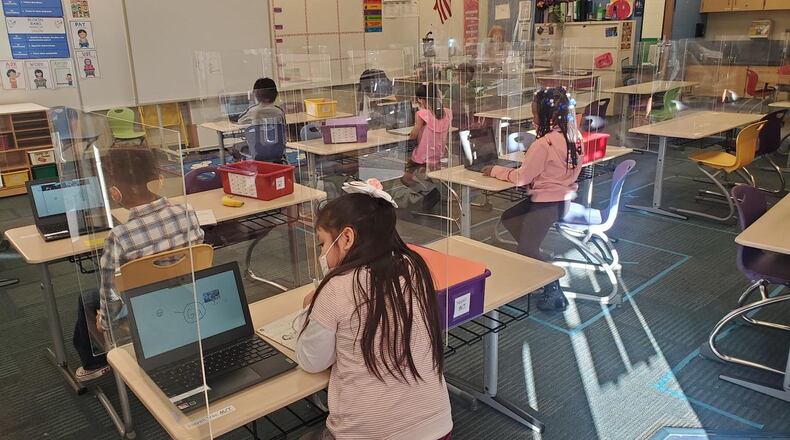Outgoing Senate Education Committee Chairwoman Peggy Lehner said Republican leadership wanted to wait to see what happened on federal waivers before taking action on testing law.
“It’s not the approach I would favor, but I understand their position,” Lehner said.
Most Ohio students take state reading and math tests each spring from third to eighth grade, science tests in fifth and eighth grade, and end-of-course exams in seven subjects across their high school years. Of those 21 tests, 17 are federally mandated.
“There seems to be some interest in the Ohio General Assembly to cancel the assessments,” said Jennifer Hogue, director of legislative services for the Ohio School Boards Association. “We heard from legislators that they felt they had more time and could do this later on if needed (rather than in December).”
In recent years, Ohio’s legislature has made multiple changes to testing and graduation rules with just months to spare. That has frustrated educators, leaving them with little time to plan for changes.
Chad Aldis, vice president of Ohio policy and advocacy for the Fordham Institute, said the Biden administration is hearing a variety of opinions on testing. Teachers unions want to waive the tests, while some civil rights groups have argued for keeping the tests (without consequences) to see where students stand after this unprecedented year, and to make sure kids don’t fall through the cracks.
Ohio’s state legislature did approve language to ensure that any spring 2021 state test results would not be used to punish low-scoring schools in a pandemic-roiled year. The recently passed House Bill 409 means a school could not face mandatory restructuring or be taken over by an Academic Distress Commission based on spring 2021 scores.
Charter schools would not face potential closure or sponsor sanctions due to poor scores, and public schools could not become newly subject to private-school vouchers.
The 2020-21 state report card to be released in September will not include component ratings or overall grades. Third-graders cannot be held back a grade solely for failing to achieve the “promotion score” on the state’s third-grade reading test.
Hogue said a separate bill, House Bill 404, prohibits schools from using student academic growth data from spring 2021 tests against teachers or principals in their performance evaluations.
But one potential consequence that does remain in place involves graduation requirements. Ohio has multiple diploma pathways, but one of the primary ones is scoring at least 18 of 35 points on the seven state high school tests.
Last spring, when state tests were canceled due to the COVID-19 pandemic, students were allowed to use their classroom grade to replace a test score for graduation purposes (A equals 5 points, B equals 4, etc.).
The Ohio Senate Education Committee voted to extend that option to this school year as well, given all the turmoil students and schools have faced. But the full House and Senate did not approve that language.
Some say student testing data for 2020-21 would be less valuable because of schools bouncing back and forth from remote to in-person, and students coming in and out of quarantine. Others say the data would be valuable for exactly that reason — comparing students who learned via different models.
Ohio Department of Education officials said if state tests are administered, students will have to take them in-person at school, not from home. That could raise concerns regarding scheduling, COVID safety and social distancing.
About the Author

